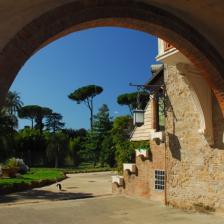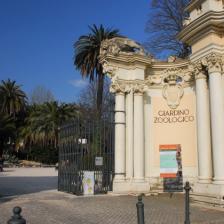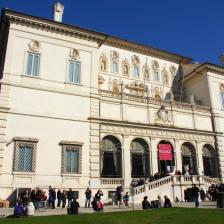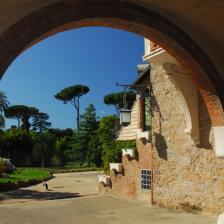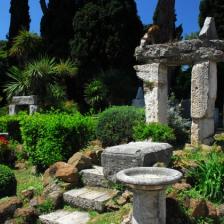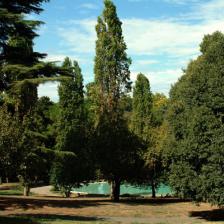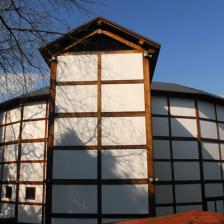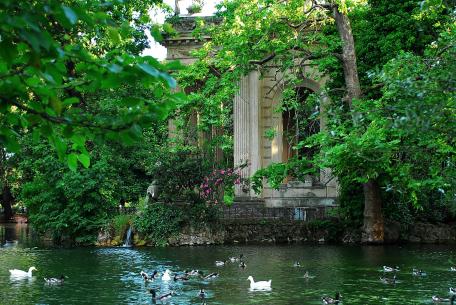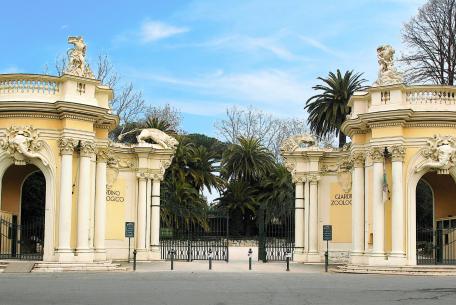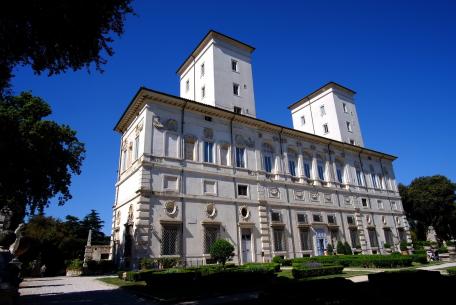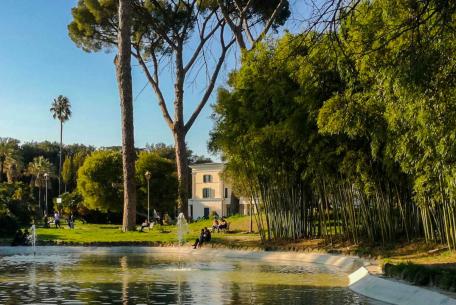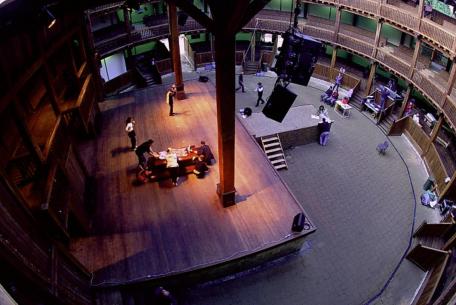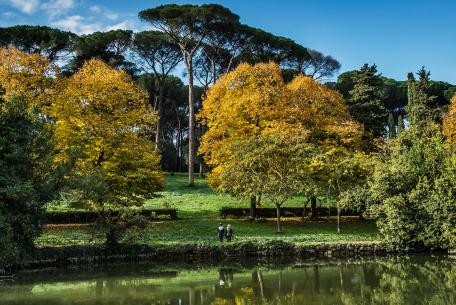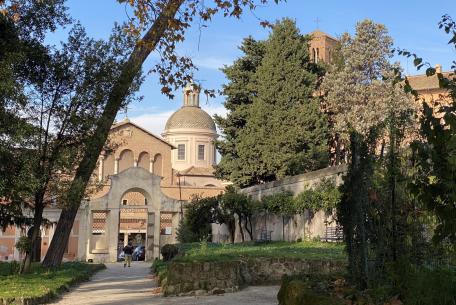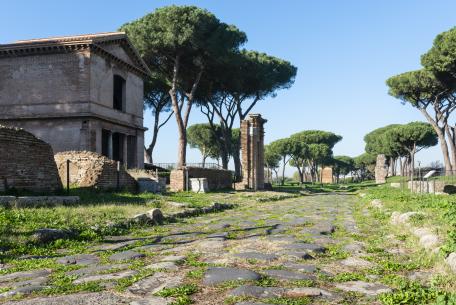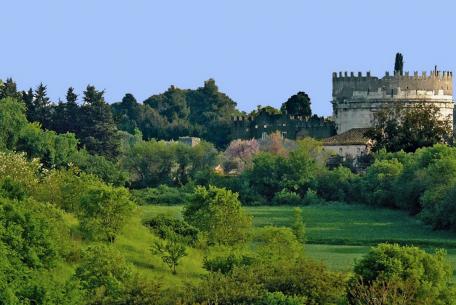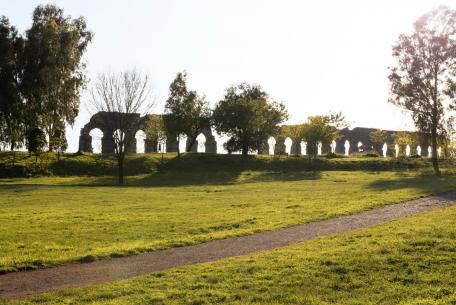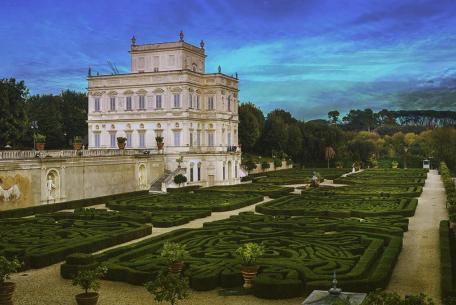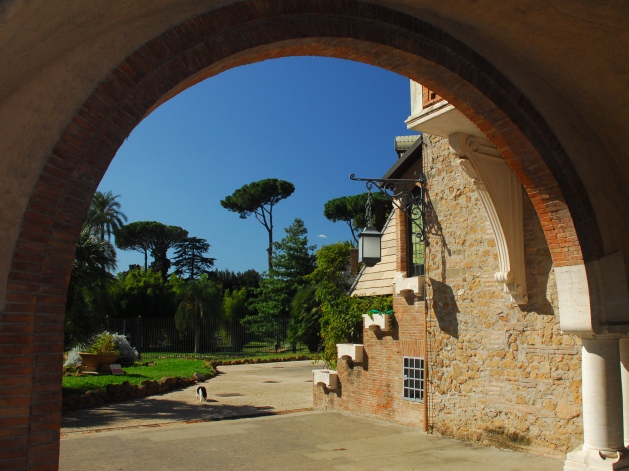
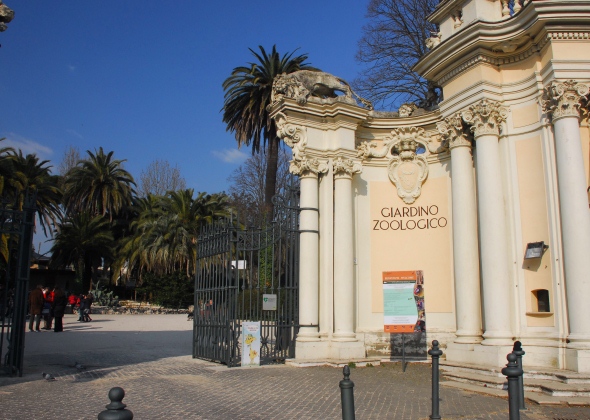
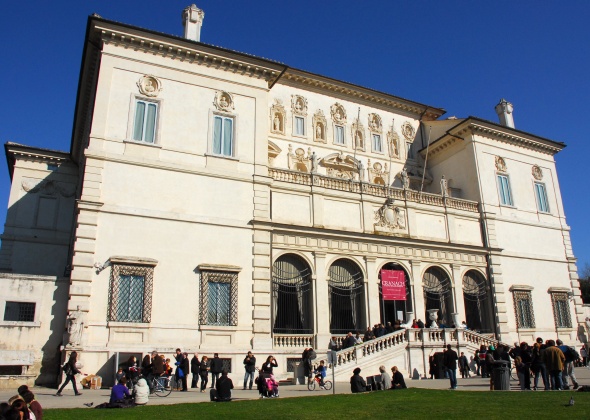
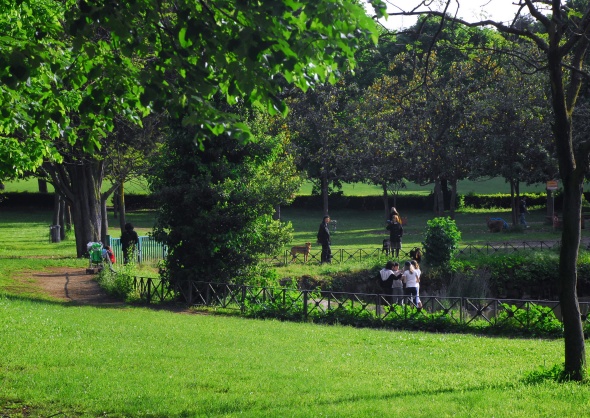
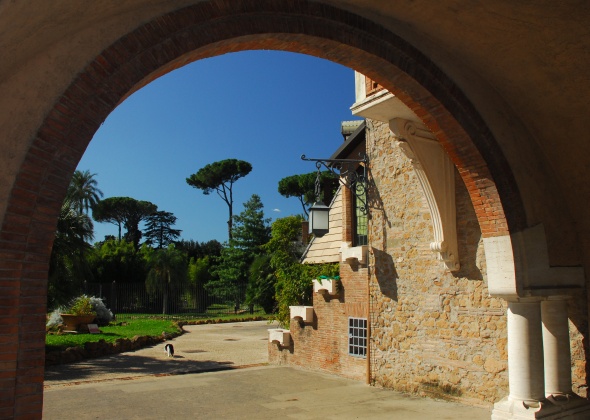
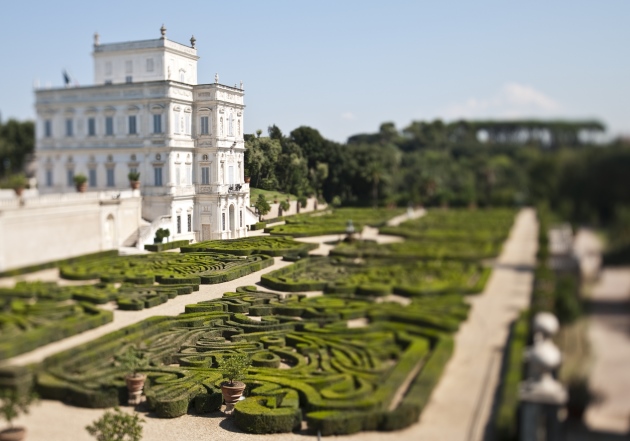
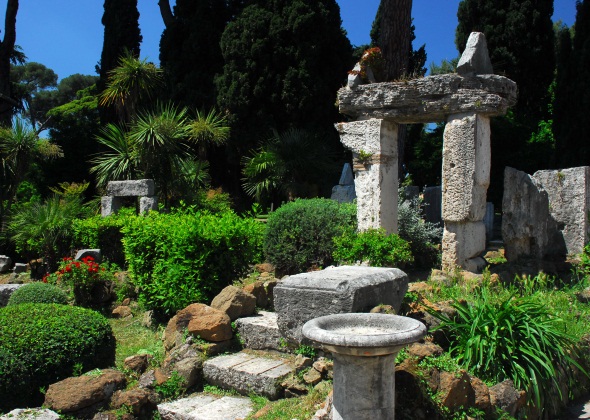
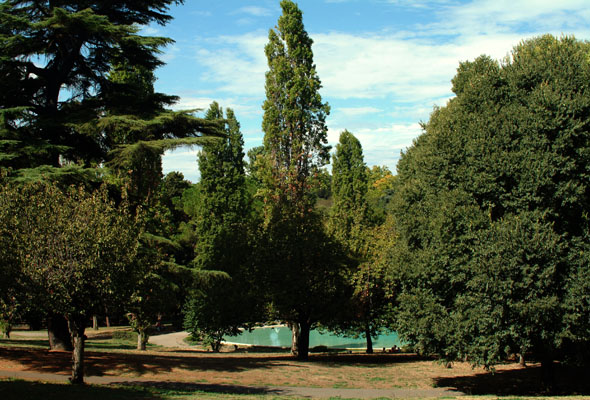
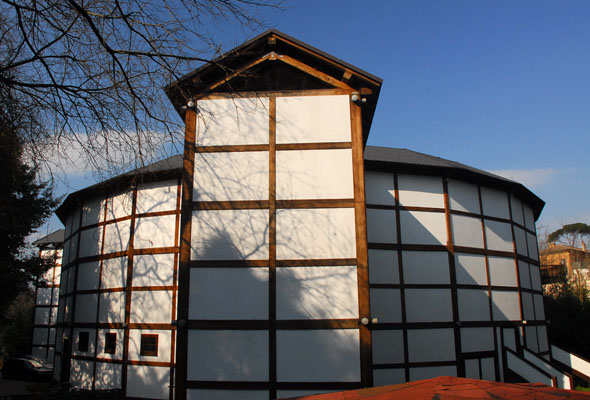
Rome offers a wide range of exciting opportunities to view splendid Villas immersed in its history-steeped and charming public parks; refreshing walks among the lavish green nature and creamy white marble.
So we start off from the Pincio (Pincian Gardens), overlooking Piazza del Popolo. Here, wooden or papier-maché pyrotechnical machines, designed by renowned architects, were once ignited on special occasions. The gardens directly spill into 85 hectars of Villa Borghese public park, which belonged to Borghese Princes’ private villa up until the end of the nineteenth century. There is something for everyone in Villa Borghese’s all-embracing sumptuous grounds: art-lovers may enjoy the invaluable collection of paintings and sculptures in the Galleria Borghese or, for example, families might choose a day out among the vast variety of mammals, reptiles and birds in the Biopark. Comfortably nestling among the pine trees is the Casa del Cinema, which offers a full programme of screenings, film editing and direction classes as well as conferences, while it is ideal for a simple break seated outside its Cinecaffè. An opportunity should neither be missed to also visit the Globe Theatre, a faithful reproduction of the Elizabethan original.
Just as invigorating is ambling through the lush Villa Torlonia public park, which is just a two kilometre bus ride along the Via Nomentana from Porta Pia. Purchased by Banker Giovanni Torlonia in 1797, the lavish villa was designed by Neoclassic Italian Architect Giuseppe Valadier in 1802. However Villa Torlonia shot to prominence, following a period of disuse, in 1925 when Fascist Leader Benito Mussolini moved in. The grounds also encompasses the Limonaia (Lemon Grove) and the delightful art nouveau-style (liberty-style in Italy) Casina delle Civette. Located near the Casina delle Civetta, the nine-roomed “Technotown” is pure fun for children with lava spewing volcanoes, a TV news programme explaining how news is reported and virtual trips to ancient Rome.
The top prize for fauna must surely go to Villa Ada with its cypresses, pine trees, pygmy palms, holm oaks and laurels. Together with its roller skating ring and facilities for jogging and physical exercises, it is a real favourite among Romans.
Meanwhile an attractive Renaissance Villa, elegantly standing midst the Celian gardens, now awaits: Villa Celimontana. A lush haven situated between the Colosseum and the Baths of Caracalla. In the Villa is also the sixteenth-century Palazzetto Mattei, headquarters of the Italian Geographical Society, where some of Italy’s most important maps are preserved.
Where the Appian Way exits from Porta San Sebastiano, and from here to the Belvedere of Cecilia Metella, you can find the Parco Regionale dell'Appia Antica. It is a protected area of particular historical, archaeological, and naturalistic interest. The park offers you an unforgettable experience in a suggestive setting, where elements that have always characterized this area of the Agro Romano between Rome and Castelli Romani blend in perfect harmony, a source of inspiration for famous artists during the centuries. The area on which it develops covers is about 3,500 hectares. It includes Via Appia and its adjacencies for a stretch of 16 kilometers, the Valle della Caffarella, the archaeological area of the Via Latina, and the Parco degli Acquedotti, whose name derives from the fact that here was the fundamental junction point of the water network of ancient Rome, where the aqueducts supplying the huge patrician villas, the baths, and the fountains of the Capital with water, intersected, joined, and overlapped. In Parco Regionale dell'Appia Antica, you can also find some of the most popular Christian catacombs, such as those of San Callisto and San Sebastiano. Between Via Appia Antica and Via Appia Nuova, there is also the imposing complex of the Villa dei Quintili.
The largest landscape park in Rome, whose boundary stretches for 9 kilometres and encompasses more than one district, is Villa Pamphili, lying at the start of the Via Aurelia. A splendid view from its terraces looks out onto the magnificent Casino del Bel Respiro, better known as Villa Algardi, designed as a showcase for the Pamphili collection of sculptures and Roman antiquities. The summer and spring are perfect to pedal your way through town, going it alone or with an association that organises bicycle rides.
 Condividi
Condividi












































